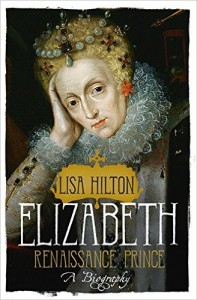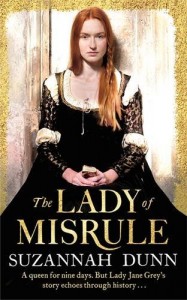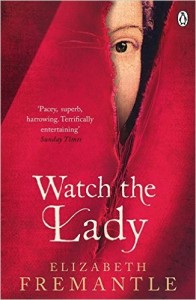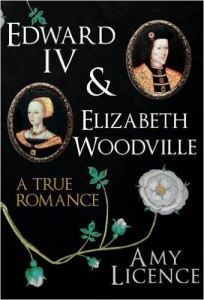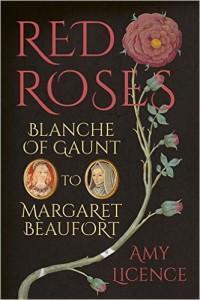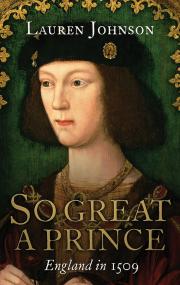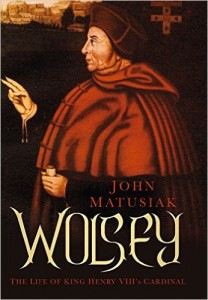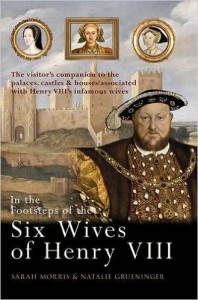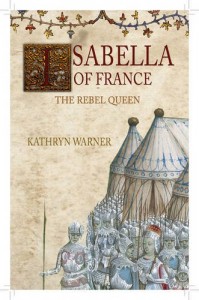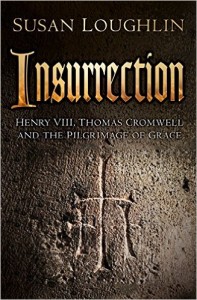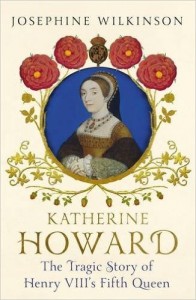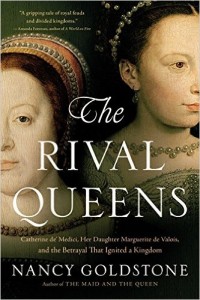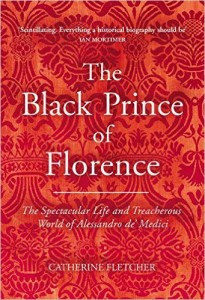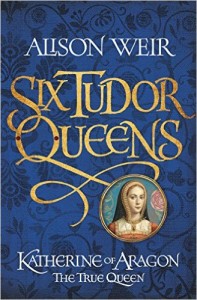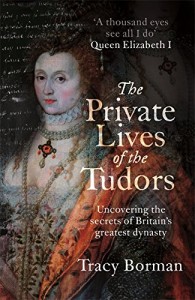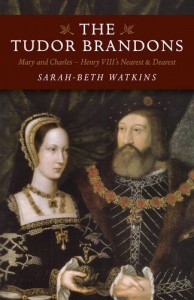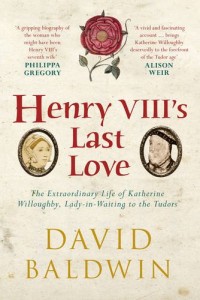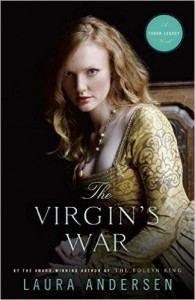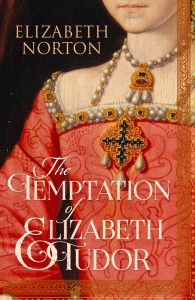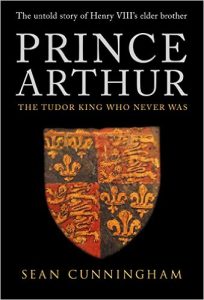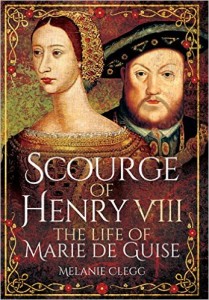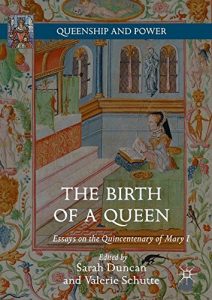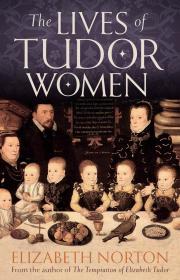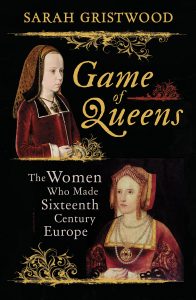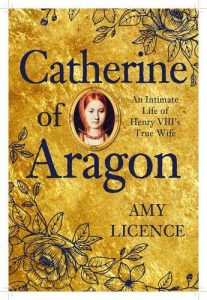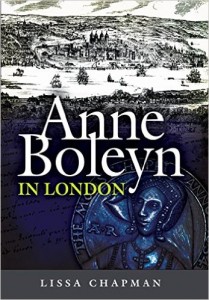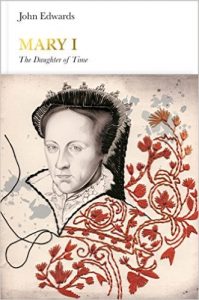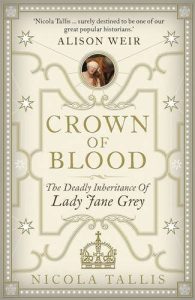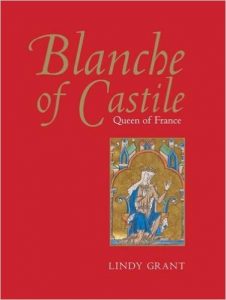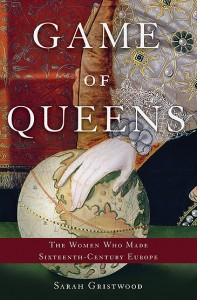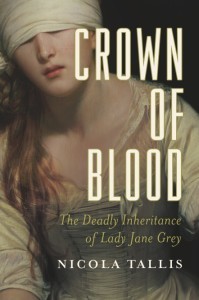14 January – Elizabeth: Renaissance Prince (paperback) by Lisa Hilton
‘We are a prince from a line of princes’
Lisa Hilton’s majestic biography of ‘The Virgin Queen’, Elizabeth I, provides vibrant new insights on the monarch’s compelling, enthralling life story. It is a book that challenges readers to reassess Elizabeth’s reign and the colourful drama, scandal and intrigue to which it is always linked.
Using new research from sources in France and Italy, Lisa Hilton to presents a fresh interpretation of Elizabeth as a queen who saw herself primarily as a Renaissance prince. She delivers a new perspective on the most intimate details of Elizabeth’s life, and upon her attempts to fashion England into a Renaissance state. Elizabeth was not an exceptional woman but an exceptional ruler, and Hilton redraws English history with this animated portrait of an astounding life. Her biography maps the dramatic journey that Elizabeth took from being a timid and meek newly-crowned queen, to one of the most powerful and vivid monarchs ever to rule England.’
Further details – Amazon.co.uk
14 January – The Lady of Misrule (paperback) by Suzannah Dunn
‘I saw her file it away: a good Catholic girl come to supervise her in her detention. Every girl in England, now, under the circumstances, made sure to be a good Catholic girl. Except her, of course. And, if only she knew it, me.
Escorting ‘nine days queen’ Lady Jane Grey across the Tower of London from throne room into imprisonment is Elizabeth Tilney, who surprised even herself by volunteering for the job. All Elizabeth knows is she’s keen to be away from home, she could do with some breathing space. And anyway, it won’t be for long: everyone knows Jane will go free as soon as the victorious new queen is crowned. Which is a good thing because the two sixteen-year-olds, cooped up together in a room in the Gentleman Gaoler’s house, couldn’t be less compatible. Protestant Jane is an icily self-composed idealist, and catholic Elizabeth is… well, anything but.
They are united though by their disdain for the seventeen-year-old to whom Jane has recently been married off: petulant, noisily-aggrieved Guildford Dudley, held prisoner in a neighbouring tower and keen to pursue his prerogative of a daily walk with his wife.
As Jane’s captivity extends into the increasingly turbulent last months of 1553, the two girls learn to live with each other, but Elizabeth finds herself drawn into the difficult relationship between the newlyweds. And when, at the turn of the year, events take an unexpected and dangerous direction, her newfound loyalties are put to the test.’
Further details – Suzannah Dunn
Further details – Amazon.co.uk
11 February 2016 – Watch The Lady (Paperback) by Elizabeth Fremantle
‘Penelope Devereux is a legendary beauty in the court of Elizabeth I, with a smile that would light up the shadows of hell. But it’s not just her looks which have won her favour with the Queen wing; her canny instinct for being in the right place at the right time, and her skilled political manoeuvrings under the guise of diplomacy, have rendered her a formidable adversary to anyone who stands in her path.
Including Elizabeth.
For Penelope must secure the future of the Devereux dynasty at whatever cost. Even treason. And the Queen, a woman she holds responsible for the death of her father, the exile of her mother and her failure to marry the one man she ever truly loved, is just one more pawn in a deadly game. Walking the knife-edge of court, whilst ensuring that her reckless brother Essex remains the only star in the Queen’s firmament – and out of the Tower – Penelope must plan for the inevitable succession of an ailing monarch.
But her secret letters of friendship to a foreign King – one who has a strong claim to the English throne – could see her illustrious family in the gutter and her own head on the block. It would only take a single mistake, a slip of the tongue, an intercepted message for Penelope to become the architect of her downfall.
In a world where sister is turned against brother, husband against wife, courtier against queen, the rules of the game are forever changing.’
Further details – Elizabeth Fremantle
Further details – Amazon.co.uk
15 February 2016 – Edward IV & Elizabeth Woodville: A True Romance by Amy Licence
When the tall, athletic Edward of York seized the English throne in 1461, he could have chosen any bride he wanted. With his dazzling looks and royal descent, the nineteen-year-old quickly got a reputation for womanising, with few able to resist his charm and promises. For three years he had a succession of mistresses, mostly among the married women and widows of his court, while foreign princesses were lined up to be considered as his queen. Then he fell in love. The woman who captured the king was a widow, five years his elder. While her contemporaries and later historians have been divided over her character, none have denied the extent of her blonde beauty. Elizabeth Wydeville had previously been married to a Lancastrian knight, who had lost his life fighting against the Yorkists.
When she tried to petition the king to help restore her son’s inheritance, reputedly waiting for him under an oak tree, the young Edward was immediately spellbound. But this did not prove to be just another fling. Conscious of her honour and her future, Elizabeth repelled his advances. His answer was to make her his wife. It was to prove an unpopular decision. Since then Edward’s queen has attracted extreme reactions, her story and connections reported by hostile chroniclers, her actions interpreted in the bleakest of lights. It is time for a reassessment of the tumultuous life of the real White Queen and her husband.
Further details – Amberley Publishing
Further details – Amazon.co.uk
25 February 2016 – The Lost Tudor Princess: A Life of Margaret Douglas, Countess of Lennox (Paperback) by Alison Weir
‘Royal Tudor blood ran in her veins. Her mother was a queen, her father an earl, and she herself was the granddaughter, niece, cousin and grandmother of monarchs. Some thought she should be queen of England. She ranked high at the court of her uncle, Henry VIII, and was lady of honour to five of his wives. Beautiful and tempestuous, she created scandal, not just once, but twice, by falling in love with unsuitable men. Fortunately, the marriage arranged for her turned into a love match.
Throughout her life her dynastic ties to two crowns proved hazardous. A born political intriguer, she was imprisoned in the Tower of London on three occasions, once under sentence of death. She helped to bring about one of the most notorious royal marriages of the sixteenth century, but it brought her only tragedy. Her son and her husband were brutally murdered, and there were rumours that she herself was poisoned. She warred with two queens, Mary of Scotland and Elizabeth of England. A brave survivor, she was instrumental in securing the Stuart succession to the throne of England for her grandson.
Her story deserves to be better known. This is the biography of an extraordinary life that spanned five Tudor reigns, a life packed with intrigue, drama and tragedy.’
Further details – Amazon.co.uk
Further details – Vintage Books
7 March 2016 – Red Roses: Blanche of Gaunt to Margaret Beaufort by Amy Licence
‘The Wars of the Roses were not just fought by men on the battlefield. Behind the scenes, there were daughters, wives, mistresses, mothers and queens whose lives and influences helped shape the most dramatic of English conflicts.
This book traces the story of women on the Lancastrian side, from the children borne by Blanche, wife of John of Gaunt, through the turbulent fifteenth century to the advent of Margaret Beaufort’s son in 1485 and the establishment of the Tudor dynasty. From the secret liaisons of Katherine Swynford and Catherine of Valois to the love lives of Mary de Bohun and Jacquetta of Luxembourg, to the queenship of Joan of Navarre and Margaret of Anjou, this book explores their experiences as women. What bound them to their cause? What real influence did they wield?
Faced with the dangers of treason and capture, defamation and childbirth, read how these extraordinary women survived in extraordinary times.’
Further details – Amazon.co.uk
10 March 2016 – So Great a Prince: England in 1509 by Lauren Johnson
‘The King is dead: long live the King. In 1509, Henry VII was succeeded by his son Henry VIII, second monarch of the house of Tudor. But this is not the familiar Tudor world of Protestantism and playwrights. Decades before the Reformation, ancient traditions persist: boy bishops, pilgrimage, Corpus Christi pageants, the jewel-decked shrine at Canterbury. So Great a Prince offers a fascinating glimpse of a country and people that at first appear alien – in calendar and clothing, in counting the hours by bell toll – but which on closer examination are recognisably and understandably human. Lauren Johnson tells the story of 1509 not just from the perspective of king and court, but of merchant and ploughman; apprentice and laundress; husbandman and foreign worker. She looks at these early Tudor lives through the rhythms of the ritual year, juxtaposing political events in Westminster and the palaces of southeast England with the liturgical and agricultural events that punctuated the year for the ordinary people of England.’
Further details – Lauren Johnson
Further details – Head of Zeus
Further details – Amazon.co.uk
10 March 2016 – Wolsey: The Life of King Henry VIII’s Cardinal (Paperback ) by John Matusiak
‘Cardinal Wolsey is a controversial figure: a butcher’s son, a man of letters and the Church, a divisive political expert, a man of principle – yet, to some, an arrogant upstart. As Lord Chancellor to the incorrigible Henry VIII he achieved much both at home and abroad, but his failure to achieve the mighty monarch’s divorce from Catherine of Aragon saw him brought to his knees. John Matusiak explores the pragmatic cardinal’s life and career to uncover a man of contradictions and extremes whose meteoric rise was marked by an equally inexorable descent into desperation, as he attempted in vain to satisfy the tempestuous master whose ambition ultimately broke him. Far from being another familiar portrait of an overweight and overweening spider or cautionary tale of pride preceding a fall, this is the gripping story of how consummate talent, noble intentions and an eagle eye for the main chance can contrive with the vagaries of power politics to raise an individual to unheard of heights before finally consuming him.’
Further details – Amazon.co.uk
15 March 2016 – In the Footsteps of the Six Wives of Henry VIII by Sarah Morris and Natalie Grueninger
‘This guidebook takes a fresh perspective on the tale of Henry VIII’s six wives, by taking you on a journey through a selection of manors, castles, and palaces that played host to Henry s unforgettable queens. Explore the Alhambra Palace in Spain, childhood home of Katherine of Aragon; stand in the very room at Acton Court, where Anne Boleyn and Henry VIII publicly dined; walk the cobbled grounds of Hampton Court Palace, which bore witness to both triumph and tragedy for Jane Seymour; visit Dusseldorf in Germany, birthplace of Anne of Cleves; travel to Gainsborough Old Hall in Lincolnshire, where Henry VIII and Catherine Howard rested on their way to York in 1541 and wander the picturesque gardens and panelled rooms of Sizergh Castle in Cumbria, where Katherine Parr spent time in mourning, after the death of her first husband. Each location is covered by an accessible and informative narrative, which unearths the untold tales and documents the artifacts, as well as providing practical visitor information based on our first-hand experiences of visiting each site. Accompanied by an extensive range of images, including family trees, maps, photographs and sketches, this book brings you closer than ever before to the women behind the legends, as it takes you on your own personal and illuminating journey in the footsteps of the six wives of Henry VIII.’
Further details – Amazon.co.uk
15 March 2016 – On the Trail of the Yorks by Kristie Dean
‘Richard III is probably the House of York’s best-known figure, but the other members of the family are just as intriguing as the king who fell on Bosworth Field. These include his father, the Duke of York, who held a claim to the throne that would eventually topple a king; his older brother Edward IV, a warrior cast in the mould of a true Plantagenet; and the resilient Yorkist queen Elizabeth Woodville and her daughter Elizabeth of York, the latter of whom would eventually unite the family with their longstanding rivals, the Lancastrians, and become the mother of the most infamous dynasty in English history, the Tudors.
This book explores the places associated with members of this fascinating family and discovers their stories through the locations they visited and inhabited. It reveals the lives of the Yorks by exploring the cathedrals, castles, battlefields and manor houses that shaped their history. Featuring locations such as Fotheringhay, Baynard’s Castle, Durham Cathedral and the Palace of Westminster, among many others, this book brings each site to life, giving a gripping account of its heritage as well as accurate information for the visitor. Extensive descriptions and an array of illustrations and photographs recreate these poignant and sometimes controversial locations, immersing the reader in the ancient and intriguing world of the Yorks.’
Further details – Amberley Publishing
Further details – Kristie Dean
Further details – Amazon.co.uk
15 March 2016 – Isabella of France: The Rebel Queen by Kathryn Warner
‘Isabella of France (c. 1295-1358), who married Edward II in January 1308, is one of the most notorious women in English history. In 1325/26, sent to her homeland to negotiate a peace settlement between her husband and her brother Charles IV, Isabella refused to return to England. She began a relationship with her husband’s deadliest enemy, the English baron Roger Mortimer, and with her son, the king’s heir, under their control, the pair led an invasion of England which ultimately resulted in Edward II’s forced abdication in January 1327 in favour of his and Isabella’s son. Isabella and Mortimer ruled England during Edward III’s minority, until he overthrew them in October 1330. A rebel against her own husband and king, regent for her son, Isabella was a powerful, capable, intelligent woman who forced the first ever abdication of a king in England and changed the course of English history. The Rebel Queen examines Isabella’s life with particular focus on her revolutionary actions in the 1320s, corrects the many myths about her, and provides a vivid account of this most fascinating and influential of women.’
Further details – Amazon.co.uk
4 April 2016 – Insurrection: Henry VIII, Thomas Cromwell and the Pilgrimage of Grace by Susan Loughlin
‘Autumn 1536. Katherine of Aragon and Anne Boleyn are dead. Henry VIII has married Jane Seymour, and still awaits his longed for male heir. Disaffected conservatives in England see an opportunity for a return to Rome and an end to religious experimentation, but Thomas Cromwell has other ideas.
The Dissolution of the Monasteries has begun and the publication of the Lutheran influenced Ten Articles of the Anglican Church has followed. The obstinate monarch, enticed by monastic wealth, is determined not to change course. Fear and resentment is unleashed in northern England in the largest spontaneous uprising against a Tudor monarch – the Pilgrimage of Grace – in which 30,000 men take up arms against the king.
This book examines the evidence for that opposition and the abundant examples of religiously motivated dissent. It also highlights the rhetoric, reward and retribution used by the Crown to enforce its policy and crush the opposition.’
Further details – Amazon.co.uk
Further details – The History Press
7 April 2016 – Katherine Howard: The Tragic Story of Henry VIII’s Fifth Queen by Josephine Wilkinson
‘Looming out of the encroaching darkness of the February evening was London Bridge, still ornamented with the severed heads of Thomas Culpeper and Francis Dereham; the terrible price they had paid for suspected intimacy with the queen.
Katherine now reached the Tower of London, her final destination.
Katherine Howard was the fifth wife of Henry VIII and cousin to the executed Anne Boleyn. She first came to court as a young girl of fourteen, but even prior to that her fate had been sealed and she was doomed to die. She was beheaded in 1542 for crimes of adultery and treason, in one of the most sensational scandals of the Tudor age.
The traditional story of Henry VIII’s fifth queen dwells on her sexual exploits before she married the king, and her execution is seen as her just dessert for having led an abominable life. However, the true story of Katherine Howard could not be more different.
Far from being a dark tale of court factionalism and conspiracy, Katherine’s story is one of child abuse, family ambition, religious conflict and political and sexual intrigue. It is also a tragic love story. A bright, kind and intelligent young woman, Katherine was fond of clothes and dancing, yet she also had a strong sense of duty and tried to be a good wife to Henry. She handled herself with grace and queenly dignity to the end, even as the barge carrying her on her final journey drew up at the Tower of London, where she was to be executed for high treason.
Little more than a child in a man’s world, she was the tragic victim of those who held positions of authority over her, and from whose influence she was never able to escape.’
Further details – Hodder & Stoughton
Further details – Josephine Wilkinson
Further details – Amazon.co.uk
19 April 2016 – The Rival Queens: Catherine de’ Medici, Her Daughter Marguerite de Valois, and the Betrayal That Ignited a Kingdom (paperback) by Nancy Goldstone
‘Set in Renaissance France at the magnificent court of the Valois kings, THE RIVAL QUEENS is the history of two remarkable women, a mother and daughter driven into opposition by a terrible betrayal that threatened to destroy the realm.
Catherine de’ Medici, the infamous queen mother of France, was a consummate pragmatist and powerbroker who dominated the throne for 30 years. Her youngest daughter Marguerite, the glamorous ‘Queen Margot’, was a passionate free spirit, the only adversary whom her mother could neither intimidate nor control.
When Catherine forces the Catholic Marguerite to marry her Protestant cousin Henry of Navarre against her will, and then uses her opulent Parisian wedding as a means of luring his Huguenot followers to their deaths, in the notorious St Bartholomew’s Day Massacre of 1572, she creates not only savage conflict within France but also a potent rival within her own family.
Rich in historical detail and vivid prose, Nancy Goldstone’s narrative unfolds as a thrilling historical epic. Treacherous court politics, poisonings, international espionage and adultery form the background to a story whose fascinating array of characters include such celebrated figures as Elizabeth I, Mary, Queen of Scots, and Nostradamus.
From Catherine’s early struggles with her husband’s exquisite mistress, Diane de Poitiers, and her exultant rise to power, through Marguerite’s poignant sacrifice of love and happiness to save her husband’s life, and ultimately to the political awakening that leads to a threat to her very survival, THE RIVAL QUEENS is a dangerous tale of love, betrayal, ambition and the true nature of courage, the echoes of which still resonate.’
Further details – Amazon.co.uk
Further details – Nancy Goldstone
21 April 2016 – Alessandro de’Medici: The Black Prince of Florence by Catherine Fletcher
‘Alessandro de’ Medici is thought to be the first black head of state in the modern West. This is the first biography in two hundred years to tell the story of his spectacular life.
Between 1531 and 1537, Alessandro’s reign as prince of Florence was as magnificently colourful as it was short. The bastard son of a Medici duke and a ‘half-Negro’ maidservant, he was propelled to power at the age of only nineteen after the grandest dynasty of the Italian Renaissance lost its last legitimate heir. Betrothed to the daughter of the Holy Roman Emperor, he faced down bloody family rivalry and enormous hostility from Florence’s oligarchs, who called him a womaniser and tyrant. Yet this real-life counterpart to Machiavelli’s Prince kept his grip on power until he was assassinated during a late-night assignation by his scheming cousin.
From dazzling palaces and Tuscan villas to the treacherous backstreets of Florence and the corridors of papal power, this dramatic biography draws on extensive archival research to overturn our perceptions both of the history of race and of the Italian Renaissance.
Further details – Catherine Fletcher
Further details – Amazon.co.uk
5 May 2016 – Elizabeth: The Forgotten Years by John Guy
‘An ageing queen, an heirless state, conspiracy all round: here is the court of Elizabeth I as never known before
History has pictured Elizabeth I as Gloriana, an icon of strength and power. But the reality, especially during her later years, was not so simple.
In 1583 Elizabeth is fifty years old, past childbearing, but her greatest challenges are still to come: the Spanish Armada; the execution of Mary, Queen of Scots; relentless plotting among her courtiers. This gripping and vivid portrait of her life and times – often told in her own words (‘You know I am no morning woman’) – reveals a woman who is fallible, increasingly insecure, and struggling to lead Britain. This is the real Elizabeth, for the first time.’
Further details – Amazon.co.uk
5th May 2016 – Henry VIII: The Evolution of a Reputation by Keith Dockray and Alan Sutton (paperback)
‘No English king is more famous-or infamous! than Henry VIII, popularly celebrated as the formidable and arrogant figure portrayed by Hans Holbein the Younger, the early Tudor stud who clocked up no fewer than six wives and the proto-nationalist/imperialist ruler who sent the pope packing and inaugurated the English Reformation. As befits such a colossus, masses has been written about the king, not only by contemporary and near-contemporary commentators, even William Shakespeare, but also professional and amateur historians ever since. Hence this richly illustrated survey of the evolution of Henry VIII’s reputation over half a millennium.’
Further details – Amazon.co.uk
5 May 2016 – Katherine of Aragon, the True Queen (Six Tudor Queens) by Alison Weir
‘A Spanish princess. Raised to be modest, obedient and devout. Destined to be an English Queen.
Six weeks from home across treacherous seas, everything is different: the language, the food, the weather. And for her there is no comfort in any of it. At sixteen years-old, Catalina is alone among strangers.
She misses her mother. She mourns her lost brother.
She cannot trust even those assigned to her protection.
KATHERINE OF ARAGON. The first of Henry’s Queens. Her story.
Acclaimed, bestselling historian Alison Weir has based her enthralling account of Henry VIII’s first wife on extensive research and new theories. She reveals a strong, spirited woman determined to fight for her rights and the rightful place of her daughter. A woman who believed that to be the wife of a King was her destiny.
History tells us how she died. This captivating novel shows us how she lived.’
Further details – Amazon.co.uk
15th May 2016 – On the Trail of Richard III by Kristie Dean (paperback)
‘Richard III remains one of the most controversial rulers in history. Whether he was guilty of murdering his nephews or not is a mystery that perhaps will never be solved. Even the location of the battlefield where, on 22 August 1485, Richard was struck down has been a matter of debate.
This book leads you on a journey through the landscape of Richard’s time. Following Richard’s trail, you will visit resplendent castles, towering cathedrals, manor homes and chapels associated with Richard. The Middle Ages come alive again as you visit Tewkesbury Abbey, where Richard helped his brother secure his throne. Witness the stunning vista of Wensleydale as you visit Middleham Castle, Richard’s adopted childhood home. Each location is brought to life through engaging narrative and an extensive collection of photographs, floor plans and images.’
Further details – Kristie Dean
Further details – Amberley Publishing
Further details – Amazon.co.uk
19 May 2016 – The Private Lives of the Tudors: Uncovering the Hidden Secrets of Britain’s Greatest Dynasty by Tracy Borman
‘I do not live in a corner. A thousand eyes see all I do.’ Elizabeth I
The Tudor monarchs were constantly surrounded by an army of attendants, courtiers and ministers. Even in their most private moments, they were accompanied by a servant specifically appointed for the task. A groom of the stool would stand patiently by as Henry VIII performed his daily purges, and when Elizabeth I retired for the evening, one of her female servants would sleep at the end of her bed.
These attendants knew the truth behind the glamorous exterior. They saw the tears shed by Henry VII upon the death of his son Arthur. They knew the tragic secret behind ‘Bloody’ Mary’s phantom pregnancies. And they saw the ‘crooked carcass’ beneath Elizabeth I’s carefully applied makeup, gowns and accessories.
It is the accounts of these eyewitnesses, as well as a rich array of other contemporary sources that historian Tracy Borman has examined more closely than ever before. With new insights and discoveries, and in the same way that she brilliantly illuminated the real Thomas Cromwell – The Private Life of the Tudors will reveal previously unexamined details about the characters we think we know so well.’
Further details – Hodder & Stoughton
Further details – Tracy Borman
Further details – Amazon.co.uk
1 June 2016 – The Tudor Brandons: Mary and Charles – Henry VIII’s Nearest & Dearest by Sarah-Beth Watkins
‘This fascinating book studies the life and times of Mary Tudor and Charles Brandon, Henry VIII’s dearest sister and his closest companion. Charles rose from being Henry’s childhood friend to becoming the Duke of Suffolk; a consummate courtier and diplomat. Mary was always royalty. At first married to the King of France, Mary quickly wed Charles after Louis XII’s death in 1515, against her brother’s wishes. Their actions could have been construed as treason yet Henry chose to spare their lives. They returned to court and despite their ongoing disagreements throughout the years, especially over the king’s marriage to Anne Boleyn, the Tudor Brandons remained Henry’s most loyal subjects and perhaps more importantly, his beloved family.’
Further details – Chronos Books
Further details – Amazon.co.uk
2 June 2016 – The Girl in the Glass Tower by Elizabeth Fremantle
‘Arbella Stuart is trapped behind the towering glass windows of Hardwick Hall. Kept cloistered from a world that is full of dangers for someone with royal blood. Half the country wish to see her on the throne and many others for her death, which would leave the way clear for her cousin James, the Scottish King
Arbella longs to be free from her cold-hearted grandmother; to love who she wants, to wear a man’s trousers and ride her beloved horse, Dorcas. But if she ever wishes to break free she must learn to navigate the treacherous game of power, or end up dead.’
Further details – Elizabeth Fremantle
Further details – Amazon.co.uk
15 June 2016 – Henry VIII’s Last Love: The Extraordinary Life of Katherine Willoughby, Lady-in-Waiting to the Tudors (paperback) by David Baldwin
‘In 1533 Katherine Willoughby married Charles Brandon, Henry VIII’s closest friend. She would go on to serve at the court of every Tudor monarch bar Henry VII and Mary Tudor.
Duchess of Suffolk at the age of fourteen, she became a powerful woman ruling over her houses at Grimsthorpe and Tattershall in Lincolnshire and wielding subtle influence through her proximity to the king. She grew to know Henry well. In 1538, only three months after Jane Seymour’s death, it was reported that they had been ‘masking and visiting’ together, and in 1543 she became a lady-in-waiting to his sixth wife, Catherine Parr. Henry had a reputation for tiring of his wives once the excitement of the pursuit was over, and in February 1546, only six months after Charles Brandon’s death, it was rumoured that Henry intended to wed Katherine Willoughby himself if he could end his present marriage.
This is the remarkable story of a life of privilege, tragedy and danger, of a woman who nearly became the seventh wife of Henry VIII.’
Further details – Amazon.co.uk
12 July 2016 – The Virgin’s War: A Tudor Legacy Novel by Laura Andersen
‘As the Spanish Armada approaches Irish shores, Elizabeth I feels the full burden of her royal office. She must not let England fall to her former husband, King Philip of Spain. And Princess Anabel, their daughter, has yet to declare with whom her allegiance—and her support—lie.
Exiled Stephen Courtenay is in France with his brother, Kit, who has his own reasons for avoiding England. But rumblings of war, a sinister plot, and their loyalty to the crown call them home. Yet not even Pippa Courtenay, their sister, gifted with divine sight, can foresee the grave danger that awaits them all. As Queen Elizabeth commits her riches, her honor, and her people to the approaching conflict, she will risk everything—even her life—to preserve England’s freedom.’
Further details – Amazon.co.uk
Further details – Laura Andersen
Further details – Random House Books
14 July 2016 – The Temptation of Elizabeth Tudor (paperback) by Elizabeth Norton
‘England, late 1547. Henry VIII is dead. His 14-year-old daughter Elizabeth is living with the old king’s widow Catherine Parr and her new husband Thomas Seymour. Ambitious, charming and dangerous, Seymour begins an overt flirtation with Elizabeth that ends in her being sent away by Catherine.
When Catherine dies in autumn 1548 and Seymour is arrested for treason soon after, the scandal explodes into the open. Alone and in dreadful danger, Elizabeth is closely questioned by the king’s regency council: Was she still a virgin? Was there a child? Had she promised to marry Seymour? In her replies, she shows the shrewdness and spirit she would later be famous for. She survives the scandal. Thomas Seymour is not so lucky.
The Seymour Scandal led to the creation of the Virgin Queen. On hearing of Seymour’s beheading, Elizabeth observed ‘This day died a man of much wit, and very little judgement’. His fate remained with her. She would never allow her heart to rule her head again.
Further details – Head of Zeus
Further details – Elizabeth Norton
Further details – Amazon.co.uk
15th July – The Lady Jane Grey’s Prayer Book by J Stephan Edwards
‘As the Lady Jane Grey Dudley walked solemnly across the frozen ground of the Tower of London and toward the scaffold on which she was to be executed, she read silently from a tiny hand-written book of reformist prayers that she carried with her. The prayers contained within the book were already very familiar to the seventeen-year-old Lady Jane, but she drew strength from reading them again, allowing her to remain remarkably composed as she approached the block and the executioner’s axe. The Lady Jane’s exceptional dignity in the face of death would earn for her the title of religious martyr. She was but the first of many such Protestant martyrs during the brief reign of Queen Mary Tudor, known today as “Bloody Mary.”
The Lady Jane’s prayer book has survived the centuries and is now held by the British Library, where it is occasionally displayed as part of the Treasures of the British Library permanent exhibition. Access to it is otherwise strictly limited, so that its full contents have until now not been seen by the general public. This volume offers for the first time a page-by-page photographic reproduction of the colorfully-decorated miniature book, British Library Harley Manuscript 2342, in its entirety. Each page of the original volume is depicted in full color and at actual size, and each image is accompanied by a precise transcription of its text together with a rendering of that text in modern English. The volume also includes an Introduction by Dr J. Stephan Edwards, an academic expert on Lady Jane Grey and on the Tudor succession crisis of 1553 with which she is associated. His Introduction places the prayer book in its full historical context and provides a brief biographical sketch of the Lady Jane Grey.
The book is a valuable resource for scholars of religion, of the Reformation, and of women’s devotional literature. It is also an inspirational text for modern persons of faith and carries a compelling personal association with one of the first of the Marian Protestant martyrs from the early years of the Protestant Reformation of the sixteenth century.’
Further details and to order– Some Grey Matter
Further details – Amazon.co.uk
15 July 2016 – Prince Arthur: The Tudor King Who Never Was by Sean Cunningham
‘During the early part of the sixteenth century England should have been ruled by King Arthur Tudor, not Henry VIII. Had the first-born son of Henry VII – Arthur, Prince of Wales (1486-1502) – lived into adulthood, his younger brother Henry would never have become King Henry VIII. The subsequent history of England would have been very different; since the massive religious, social and political changes of the Henry VIII’s reign might not have been necessary at all.
In naming his eldest son Arthur, Henry VII was making an impressive statement about what the Tudors hoped to achieve as rulers within Britain. Since the story of Arthur as a British hero was very well-known to all ranks of the crown’s subjects, the name alone gave the young prince a great deal to live up to. Through Arthur’s education, exposure to power and responsibility, his key marriage to a Spanish princess, Catherine of Aragon, and his preparation for kingship, did Henry VII hope to shape his heir into a paragon of kingship that all of Britain could look up to?’
This biography explores all of these aspects of Prince Arthur’s life, his relationship with his brother and imagines what type of king he might have been. The book is illustrated with 50 illustrations, 30 in colour
Further details – Amazon.co.uk
Further details – Amberley Publishing
30th August 2016 – Scourge of Henry VIII: The Life of Marie de Guise by Melanie Clegg
‘Although Mary, Queen of Scots continues to fascinate both historians and the general public alike, the story of her mother, Marie de Guise, is much less well known. A political power in her own right, she was born into the powerful and ambitious Lorraine family, spending her formative years at the dazzling and licentious court of Francois I. Although briefly courted by Henry VIII, she instead married his nephew, James V of Scotland, in 1538. James’ premature death four years later left their six day old daughter, Mary, as Queen and presented Marie with the formidable challenge of winning the support of the Scottish people and protecting her daughter’s threatened birthright. Content until now to remain in the background and play the part of the obedient wife, Marie spent the next eighteen years effectively governing Scotland, devoting her considerable intellect, courage and energy to safeguarding her daughter’s inheritance by using a deft mixture of cunning, charm, determination and tolerance.The last serious biography of Marie de Guise was published in 1977 and whereas plenty of attention has been paid to the mistakes of her daughter’s eventful but brief reign, the time has come for a fresh assessment of this most fascinating and under appreciated of sixteenth century female rulers.’
Further details – Amazon.co.uk
30 September 2016 – The Birth of a Queen: Essays on the Quincentenary of Mary I edited by Sarah Duncan and Valerie Schutte
‘Marking the 500th year anniversary of the birth of Queen Mary I in 1516, this book both commemorates her rule and rehabilitates and redefines her image and reign as England’s first queen regnant. In this broad collection of essays, leading historians of queenship (or monarchy) explore aspects of Mary’s life from birth to reign to death and cultural afterlife, giving consideration to the struggles she faced both before and after her accession, and celebrating Mary as a queen in her own right.’
Further details – Palgrave Macmillan
Further details – Amazon.co.uk
6th October 2016 – The Lives of Tudor Women by Elizabeth Norton
‘The turbulent Tudor age never fails to capture the imagination. But what was it actually like to be a woman during this period? This was a time when death in infancy or during childbirth was rife; when marriage was usually a legal contract, not a matter for love, and the education of women was minimal at best. Yet the Tudor century was also dominated by powerful and characterful women in a way that no era had been before. Elizabeth Norton explores the seven ages of the Tudor woman, from childhood to old age, through the diverging examples of women such as Elizabeth Tudor, Henry VIII’s sister who died in infancy; Cecily Burbage, Elizabeth’s wet nurse; Mary Howard, widowed but influential at court; Elizabeth Boleyn, mother of a controversial queen; and Elizabeth Barton, a peasant girl who would be lauded as a prophetess. Their stories are interwoven with studies of topics ranging from Tudor toys to contraception to witchcraft, painting a portrait of the lives of queens and serving maids, nuns and harlots, widows and chaperones.’
Further details – Elizabeth Norton
Further details – Head of Zeus
Further details – Amazon.co.uk
6th October 2016 – Game of Queens: The Women Who Made Sixteenth Century Europe by Sarah Gristwood (UK)
‘The dramatic story of the 16th century in Europe as told through thirteen women who wielded power, from Anne Boleyn and Catherine de Medici to Elizabeth I
Sixteenth-century Europe saw an explosion of female rule. From Isabella of Castile and her granddaughter Mary Tudor, to Catherine de Medici, Anne Boleyn, and Elizabeth Tudor, women wielded enormous power over their territories for more than a hundred years. In the sixteenth century, as in our own, the phenomenon of the powerful woman offered challenges and opportunities. Opportunities, as when in 1529 Margaret of Austria and Louise of Savoy negotiated the “Ladies’ peace” of Cambrai. Challenges, as when both Mary Queen of Scots and her kinswoman Elizabeth I came close to being destroyed by sexual scandal.
A fascinating group biography of some of the most beloved (and reviled) queens in history, Game of Queens tells the story of the powerful women who drove European history.’
Further details – Sarah Gristwood
6 October 2016 – Royal Renegades: The Children of Charles I and the English Civil Wars by Linda Porter
‘The fact that the English Civil War led to the execution of King Charles I in January 1649 is well known, as is the restoration of his eldest son as Charles II eleven years later. But what happened to the king’s six surviving children is far less familiar.
Casting new light on the heirs of the doomed king and his unpopular but indefatigable Catholic queen, Henrietta Maria, acclaimed historian Linda Porter brings to life their personalities, legacies, feuds and rivalries for the first time. As their calm and loving family life was shattered by war, Elizabeth and Henry were used as pawns in the Parliamentary campaign against their father; Mary, the Princess Royal, was whisked away to the Netherlands as the child bride of the Prince of Orange; Henriette Anne’s redoubtable governess escaped with the king’s youngest child to France where she grew up under her mother’s thumb and eventually married the cruel and flamboyant Philippe d’Orleans.
When their ‘dark and ugly’ brother Charles eventually succeeded his father to the English throne after fourteen years of wandering, he promptly enacted a vengeful punishment on those who had spurned his family, with his brother James firmly in his shadow. A tale of love and endurance, of battles and flight, of educations disrupted, the lonely death of a young princess and the wearisome experience of exile, Royal Renegades charts the fascinating story of the children of loving parents who could not protect them from the consequences of their own failings as monarchs and the forces of upheaval sweeping England.’
Further details – Linda Porter
Further details – Andrew Lownie – Linda Porter
15 October 2016 – Catherine of Aragon: An Intimate Life of Henry VIII’s True Wife by Amy Licence
‘Catherine of Aragon continues to fascinate readers 500 years after she became Henry VIII’s first queen. Her life was one of passion and determination, of suffering and hope, but ultimately it is a tragic love story, as circumstances conspired against her. Having lost her first husband, Henry’s elder brother Prince Arthur, she endured years of ill health and penury, to make a dazzling second match in Henry VIII. There is no doubt that she was Henry’s true love, compatible with him in every respect and, for years, she presided over a majestic court as the personification of his ideal woman. However, Catherine’s body failed her in an age when fertility meant life or death. When it became clear that she could no longer bear children, the king’s attention turned elsewhere, and his once chivalric devotion became resentment. Catherine’s final years were spent in lonely isolation but she never gave up her vision: she was devoted to her faith, her husband and to England, to the extent that she was prepared to be martyred for them. One of the most remarkable women of the Tudor era, Catherine’s legendary focus may have contributed to the dissolution of the way of life she typified.’
Further details – Amberley Publishing
Further details – Amazon.co.uk
24th October – Anne Boleyn in London by Lissa Chapman
‘Romantic victim? Ruthless other woman? Innocent pawn? Religious reformer? Fool, flirt and adulteress? Politician? Witch? During her life, Anne Boleyn, Henry VIII’s ill-fated second queen, was internationally famous – or notorious; today, she still attracts passionate adherents and furious detractors. It was in London that most of the drama of Anne Boleyn’s life and death was played out – most famously, in the Tower of London, the scene of her coronation celebrations, of her trial and execution, and where her body lies buried. Londoners, like everyone else, clearly had strong feelings about her, and in her few years as a public figure Anne Boleyn was influential as a patron of the arts and of French taste, as the centre of a religious and intellectual circle, and for her purchasing power, both directly and as a leader of fashion. It was primarily to London, beyond the immediate circle of the court, that her carefully ‘spun’ image as queen was directed during the public celebrations surrounding her coronation.In the centuries since Anne Boleyn’s death, her reputation has expanded to give her an almost mythical status in London, inspiring everything from pub names to music hall songs, and novels to merchandise including pin cushions with removable heads. And now there is a thriving online community surrounding her – there are over fifty Twitter accounts using some version of her name. This book looks at the evidence both for the effect London and its people had on the course of Anne Boleyn’s life and death, and the effects she had, and continues to have, on them.’
Further details – Amazon.co.uk
27th October 2016 – Mary I (Penguin Monarchs): The Daughter of Time by John Edwards
‘The elder daughter of Henry VIII, Mary I (1553-58) became England’s ruler on the unexpected death of her brother Edward VI. Her short reign is one of the great potential turning points in the country’s history. As a convinced Catholic and the wife of Philip II, king of Spain and the most powerful of all European monarchs, Mary could have completely changed her country’s orbit, making it a province of the Habsburg Empire and obedient again to Rome.
These extraordinary possibilities are fully dramatized in John Edward’s superb short biography. The real Mary I has almost disappeared under the great mass of Protestant propaganda that buried her reputation during her younger sister, Elizabeth I’s reign. But what if she had succeeded?’
Further details – Penguin Books
Further details – Amazon.co.uk
3 November 2016 – Crown of Blood: The Deadly Inheritance of Lady Jane Grey by Nicola Tallis
‘ Following Lady Jane Grey’s journey from the deadly intrigues of her childhood that led inexorably through to her trial and execution at the age of seventeen, Nicola Tallis explores new evidence that brings fresh insight to the life of the Nine Days Queen.
She reveals the human and emotional story that has thus far been ignored, introducing us to a young woman and religious radical who ultimately became a martyr for her faith.’
Further details – Michael O’Mara Books
Further details – Amazon.co.uk
Further details – Nicola Tallis
16 November 2016 – Blanche of Castile, Queen of France by Lindy Grant
‘This is the first modern scholarly biography of Blanche of Castile, whose identity has until now been subsumed in that of her son, the saintly Louis IX. A central figure in the politics of medieval Europe, Blanche was a sophisticated patron of religion and culture. Through Lindy Grant’s engaging account, based on a close analysis of Blanche’s household accounts and of the social and religious networks on which her power and agency depended, Blanche is revealed as a vibrant and intellectually questioning personality.’
Further details – Yale University Press
Further details – Amazon.co.uk
29 November 2016 – Game of Queens by Sarah Gristwood (US)
‘The dramatic story of the 16th century in Europe as told through thirteen women who wielded power, from Anne Boleyn and Catherine de Medici to Elizabeth I
Sixteenth-century Europe saw an explosion of female rule. From Isabella of Castile and her granddaughter Mary Tudor, to Catherine de Medici, Anne Boleyn, and Elizabeth Tudor, women wielded enormous power over their territories for more than a hundred years. In the sixteenth century, as in our own, the phenomenon of the powerful woman offered challenges and opportunities. Opportunities, as when in 1529 Margaret of Austria and Louise of Savoy negotiated the “Ladies’ peace” of Cambrai. Challenges, as when both Mary Queen of Scots and her kinswoman Elizabeth I came close to being destroyed by sexual scandal.
A fascinating group biography of some of the most beloved (and reviled) queens in history, Game of Queens tells the story of the powerful women who drove European history.’
Further details – Sarah Gristwood
6 December 2016 – Crown of Blood by Nicola Tallis (US)
‘A significant retelling of the often-misunderstood tale of Lady Jane Grey’s journey through her trial and execution—recalling the dangerous plots and web of deadly intrigue in which she became involuntarily tangled, and which ultimately led to a catastrophic conclusion.
“Good people, I am come hither to die, and by a law I am condemned to the same.” These were the heartbreaking words of a seventeen-year-old girl, Lady Jane Grey, as she stood on the scaffold awaiting death on a cold February morning in 1554. Minutes later her head was struck from her body with a single stroke of a heavy axe. Her death for high treason sent shockwaves through the Tudor world, and served as a gruesome reminder to all who aspired to a crown that the axe could fall at any time.
Jane is known to history as “the Nine Days Queen,” but her reign lasted, in fact, for thirteen days. The human and emotional aspects of her story have often been ignored, although she is remembered as one of the Tudor Era’s most tragic victims. While this is doubtlessly true, it is only part of the complex jigsaw of Jane’s story. She was a remarkable individual with a charismatic personality who earned the admiration and affection of many of those who knew her. All were impressed by her wit, passion, intelligence, and determined spirit. Furthermore, the recent trend of trying to highlight her achievements and her religious faith has, in fact, further obscured the real Jane, a young religious radical who saw herself as an advocate of the reformed faith—Protestantism—and ultimately became a martyr for it.
Crown of Blood is an important and significant retelling of an often-misunderstood tale: set at the time of Jane’s downfall and following her journey through to her trial and execution, each chapter moves between the past and the “present,” using a rich abundance of primary source material (some of which has never been published) in order to paint a vivid picture of Jane’s short and turbulent life. This dramatic narrative traces the dangerous plots and web of deadly intrigue in which Jane became involuntarily tangled—and which ultimately led to a shocking and catastrophic conclusion.’
Further details – Pegasus Books
Further details – Nicola Tallis

